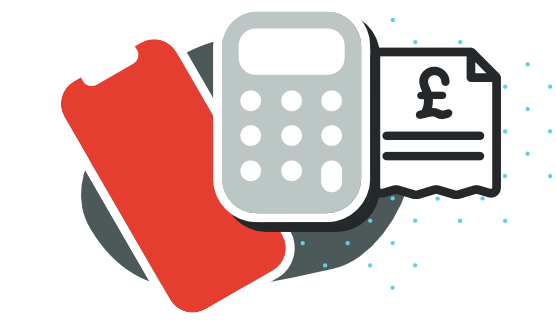How to become an Amazon seller
Table of Contents
Thinking about setting up a small business on Amazon? As the world’s leading internet company by revenue, selling on the platform can prove to be a lucrative business, so long as you know the tricks and master the tools – and we’re here to help with that.
This guide contains all the information you need to set yourself up as an Amazon seller, including:
- How to create an Amazon seller account
- Which products to sell on Amazon
- How many items to sell
- Your Amazon sales strategy
- Why and how to become an Amazon brand owner
- Setting up your Amazon business for success
- Dropshipping versus holding stock
- What is Fulfilment by Amazon (FBA)?
- Managing your finances as an Amazon seller
Getting started: Creating an Amazon seller account
Creating a seller account is a quick and friction-free process, thanks to Amazon’s relentless focus on customer satisfaction. Once you’ve signed up, simply enter your business details (location, type, billing, etc.), choose your marketplace and confirm the products you plan to sell.
But, before you do all this, there are a few things to decide:
What products do you want to sell?
Familiarise yourself with Amazon’s product categories and potential restrictions within each one, even if you know what you’re going to sell.
For example, if you want to sell products in the alcohol category, make sure you comply with the UK Code of Non-Broadcast Advertising (the CAP Code). Sellers who list prohibited items or content can have their selling permissions removed, either temporarily or permanently. The last thing you want is to accidentally break the rules and be suspended as a seller.
You also want to be sure that you’re filling a gap in the market and won’t be overwhelmed with competition.
If you don’t have a product in mind, start with the basics. Explore different categories to understand which products are the bestsellers and where you can take advantage of market opportunities.

Google Chrome extensions like Jungle Scout – which shows you monthly product sales volumes, displays items with low competition, and allows you to save items to track them over time – are invaluable in getting a lay of the land.
Which sales strategy will you use on Amazon?
With a clear idea of what products you’re going to sell on Amazon, you now need to decide how you’re going to go about selling them.
You have two options:
- Become a reseller and find popular products that already exist and offer them in Amazon’s stores.
- Become a brand owner and manufacture your own products – or source goods to sell under a private label – to offer shoppers unique selection.
Lots of sellers do both. You can choose whichever method works for your goals.
There’s money to be made from both routes. How much will depend on your strategy, products and the effort you put in.
Why become an Amazon reseller?
If you choose to become a reseller, you might find more joy in selling new products with less competition. If you sell proven products, alongside lots of other sellers, your items could get lost in an oversaturated market.
With less competition, you also stand a chance to ‘win a share of the Buy Box’. This is the white box on the right side of the Amazon product detail page, where customers can add items for purchase to their cart. It can help turn browsers into buyers of your products.
Why become an Amazon brand owner?
If you become a brand owner – by applying for Brand Registry – you’ll unlock a number of tools which aren’t available to resellers to protect and boost your brand.

One of these tools is an Amazon Store, a mini-website for brands on Amazon Marketplace with multiple pages for content and internal links, among other features. It will also give you access to Brand Analytics, where you’ll get information on the top search terms that lead to conversion for a brand’s products and categories, as well as competitors’ products.
Setting your Amazon business up for success
Having identified the products you’re going to sell, you now need to consider the following business decisions. Getting them right will determine the success you enjoy on Amazon.
Holding stock vs dropshipping
Whether to hold your own stock and send orders out directly to customers or have a third party fulfil them is a key decision. It will have implications on both your time and your cash flow.
If you choose to manage your own stock, the challenge is holding just the right amount of inventory. If you don’t hold enough stock and are unable to meet customers’ expectations, it could drive customers away. Worse, it could result in them leaving a poor review of your product.
On the other hand, overstocking items ‘just in case’ of an influx in demand is risky too and could cause cash flow problems. Inventory management and fulfilment of customer orders can also eat into your time and stop you from working on other areas of your business.
This is why many small business owners opt for dropshipping, which involves purchasing inventory as needed from a third party – usually a wholesaler or manufacturer – to fulfil orders.
Mind your margins
While dropshipping lets you launch an e-commerce store without having to invest thousands of pounds in stock up front, it can result in low margins. Because it’s so easy to get started, and the overhead costs are so minimal, many competing stores will set up shop and sell items at rock-bottom prices in an attempt to grow revenue.
What is Fulfilment by Amazon?
Sitting somewhere between the two options is Fulfilment by Amazon (FBA). While you’ll need to pay for stock in advance of sales, you then send your products to Amazon’s Fulfilment Centres and they take care of the rest. Fees are charged for order fulfilment and inventory storage, based on the dimension and weight of the item and the channel through which it’s sold.

Should you set up as a sole trader or limited company?
If you’re just starting out in the world of self-employment, working as a sole trader is the simplest setup. You just have to choose a suitable name for your business (working under your own name is fine too), inform HMRC that you’re self-employed, and make sure that you’re set up for paying National Insurance contributions.
As a sole trader, you won’t have the same level of protection as you would a limited company. If you’re sued and uninsured, your personal finances will take the hit. With a limited company, you’re considered a separate entity from the business.
However, to set up a limited company, you have to be willing to accept the additional regulations and paperwork that goes along with it. For example, registering a new business with Companies House and making your accounts public.
Should you hire an accountant or manage your own accounts?
When you’re running your own business, it’s important to keep good financial records from the start. Perhaps you already have a business and want to sell on Amazon for a bit of extra money. If so, it’s never too late to get organised and back on track to managing your finances.

As limited company accounts are more complex than those of a sole trader, we recommend enlisting the help of a professional to make sure you’re submitting accurate financial records. But if you’re a sole trader, you might feel confident managing your own accounts.
Whether or not you’re going to outsource your accounts, you can make it easier for yourself (and your accountant). Using a separate business current account can save you time and money on bookkeeping, and will help you claim back your allowable business expenses (and effectively pay less tax). A two-in-one business current account like Countingup makes it simple for you to keep track of your business’ cash flow, stay on top of your expenses and more.
You’ll be up and running on Amazon in no time, honing your sales strategy and growing your business. With the right foundations in place, there’s every reason to think you can be one of Amazon’s success stories.
Countingup is the business account that comes with free, built-in accounting software. The app makes bookkeeping simple with automatic expense categorisation. Spend less time worrying about financial admin, and more time growing your Amazon business. Apply for your account today.




